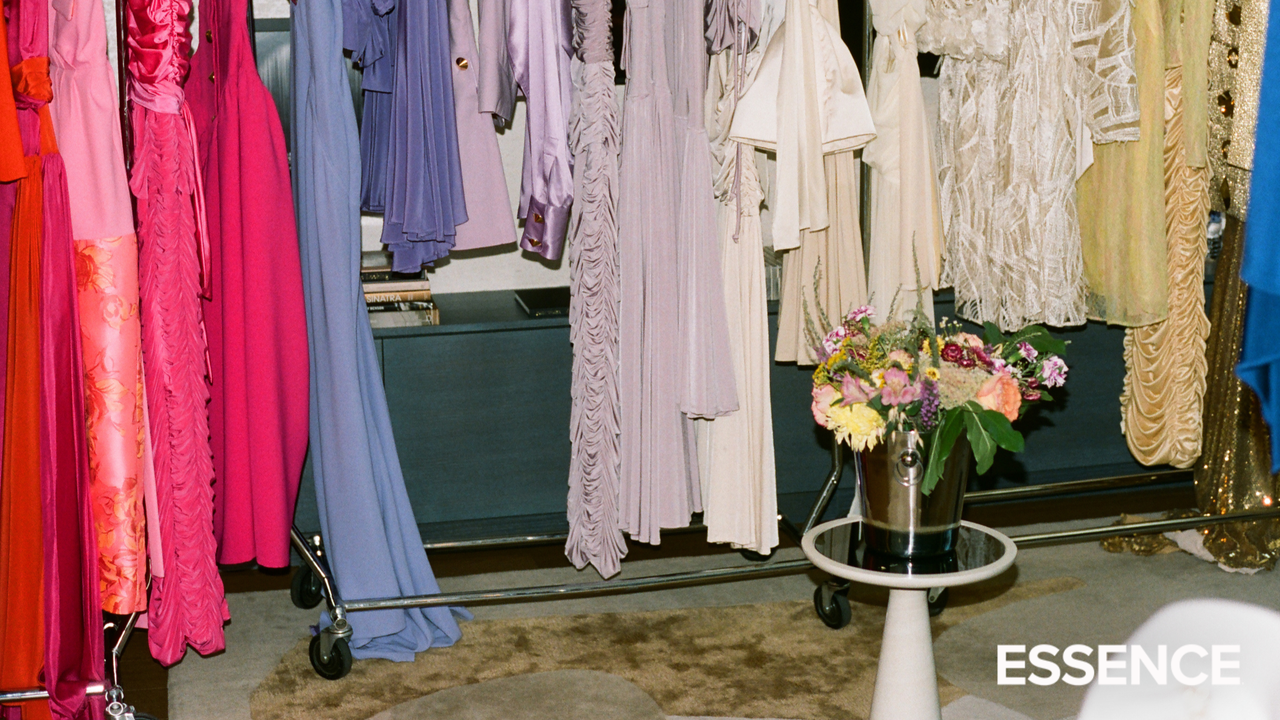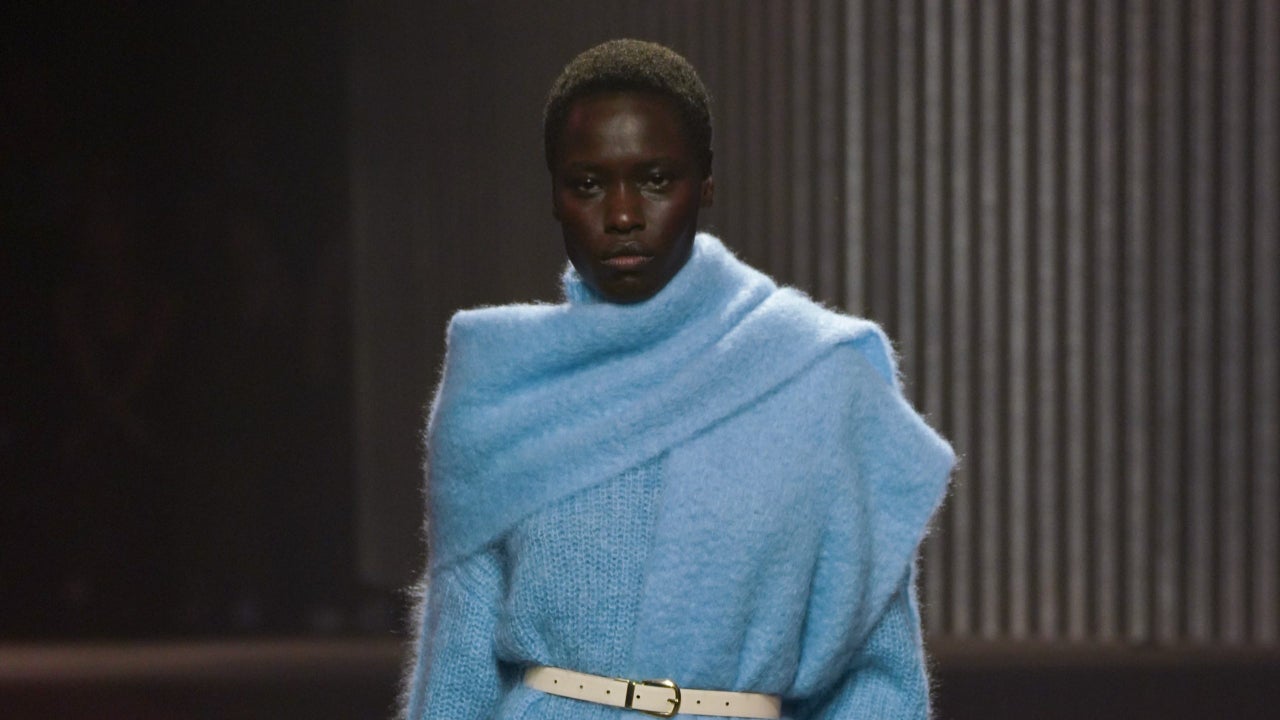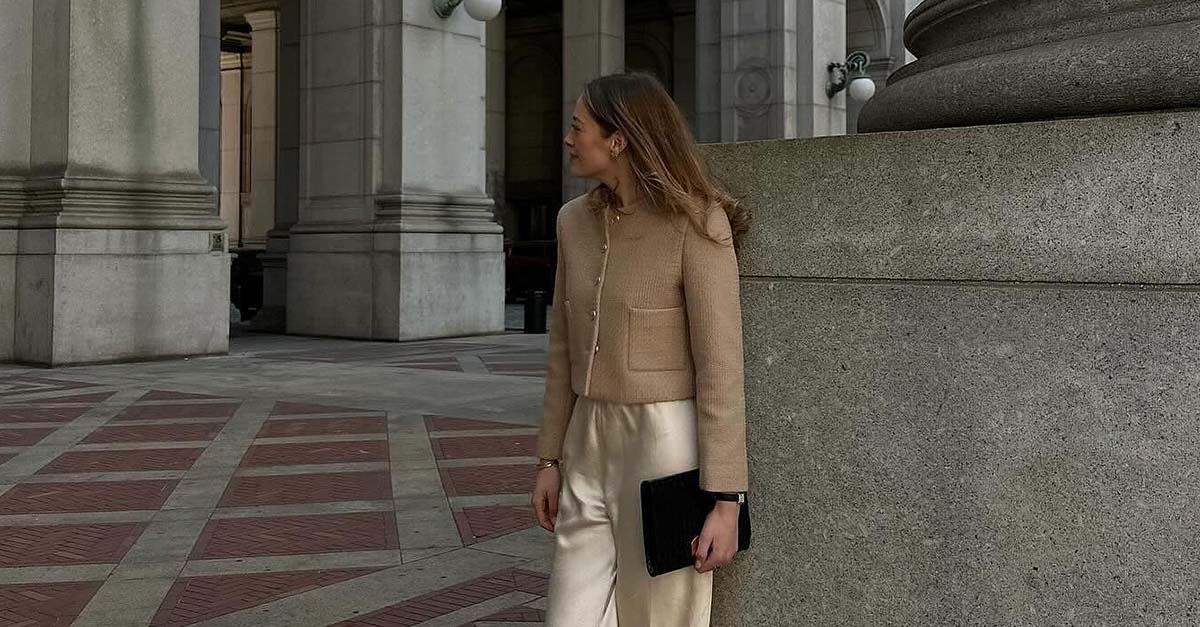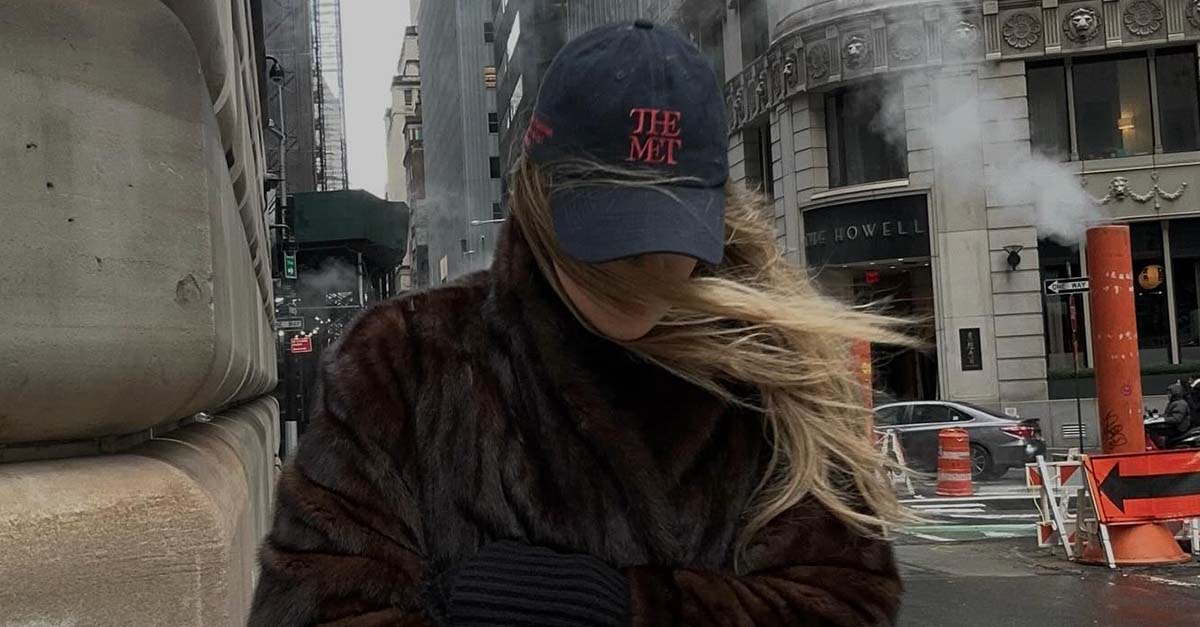
Charles Harbison emits a natural glow over our Zoom call from Los Angeles, despite it still being early morning there. The designer tells me he ran out for a coffee ahead of our conversation. He adds that L.A. has turned him into someone who wears tunics and shorts, and enjoys spending time on his patio with his boyfriend before starting his day. As his warm demeanor pours out all through our conversation, it becomes clear why success in the fashion industry has found the designer: He exudes confidence mixed with a down-to-earth aura that evokes his Southern origins. And the voluminous gowns he creates have so much history and significance because they are a declaration of his personal relationships with strong women. It’s no surprise that his designs have been worn by our Forever First Lady Michelle Obama and mega-talented Pose star Dominique Jackson.

Harbison grew up alongside his younger brother Stedman in the small town of Lincolnton, North Carolina, where he was raised by his father and formidable working-class Black women, including his mother, Dana, his grandmother, Hattie, and various other matriarchs. Each of these mother figures helped instill his self–confidence, and they are also responsible for his earliest fashion memories. Harbison notes that he grew up enamored of the imaginative way they presented themselves to the world.
Though his mother built tool sets at a factory for a living, outside of work, she would transform into a chic, Donna Karan–esque woman, and his grandmother, a factory knitter, would often express herself through thoughtfully coordinated pieces. “There’s a lifetime’s worth of inspiration that just those two women have offered to me,” Harbison says. “I seek to dispense that to everybody, because I know that has benefited me.”
His upbringing in rural Lincolnton was “very centered on family, on the outdoors, on food,” the designer recalls. As a child, Harbison was also encouraged to express himself creatively. “I was always drawing,” he says. “There was never a lack of crayons around the house.” He also recalls that though he’d get in trouble for drawing on the walls of his home, his artistic pursuits were never frowned upon.

Harbison’s mother eventually signed him up for painting classes with a woman in his hometown. His brother still has an oil painting the designer created for him when he was around 12 years old. “My family always sought to accelerate whatever I loved,” Harbison says. “I grew up with a lot of affirmation.” Along with art, he also had an appreciation for math and science at a young age, and these helped foster an interest in architecture. Harbison brought all these affinities for self-expression with him to North Carolina State University. Initially, he planned to study architecture, but during his first year at the historically Black university, he says, he fell in love with manipulating fabrics while taking a multidisciplinary design course. His love for textures was instilled in him by his parents’ relationship with clothing. He recalls being fascinated by his -mother’s and father’s dressing habits. “My dad would put broaches on me before church, so there was all this fun in clothing,” he reflects. “He dressed with as much appeal and thoughtfulness as my mom.”
The design course sparked something in Harbison—and it led him to shift his discipline from architecture to fiber arts, painting and textile science. “I think that’s what I love the most about State is that it expanded my curiosity and creative expression,” Harbison says. He also remembers that his school was incredibly supportive and inspiring, and he credits that to brilliant professors who “fought” for him to take on interesting disciplines and to challenge himself. He names Marva Motley, Chandra Cox and Michael Pause, all of whom pushed him to pursue the study of textiles abroad, in Uzbekistan, a year before he moved to New York to attend Parsons School of Design in 2007.
I myself had professors who looked out for me at another HBCU, Florida Agricultural and Mechanical University—so I wondered if -Harbison felt his teachers prepped him for the realities that many Black creative students encounter post-college. He says he feels they did much more: Not only were they instrumental in preparing him for fashion school but he says his protective circle of instructors also offered advice and affirmation even after he left the college.

While at Parsons, he says, he once again fell in love with clothes—but this time it was the sophistication of cuts mixed with patterns, and his experimentation with draping that he found to be particularly exciting. Harbison was simultaneously having what he calls a “really urban metropolitan experience”—one he already had an affinity for in a “domestic working-class sense,” due to his family background. While at Parsons, he also interned at Michael Kors and Kate Spade, and in time he went to work at Luca Luca and later Billy Reid, with hopes of moving the needle in terms of what these companies were designing.
Inevitably, his past fashion references would come out in his work at these houses, but the references weren’t clicking because the team around him didn’t have the diverse experiences they needed to pull from. “That was the kind of heartbreaking, disillusioning experience that I had in my work life,” Harbison says of his time with mainstream clothing brands. “And so the goal for me became to have something with my name on it. That process was definitely expedited because finding a home for my stories elsewhere was impossible. I had to build that home for myself.”
While in between jobs, he showed some designs to his mentors Patrick Robinson and Kathryn Neale Shaffer. With their praise and a firm belief in himself, he launched his eponymous brand in 2013. A meeting at Vogue immediately shifted things for him, as the publication helped him get into stores and gave him a spot in the September 2014 issue. But after just over two years of running his business and trying to fund it, he was emotionally and physically spent. In 2016, the death of his grandmother pushed him to reckon with the fallout of being a workhorse and not taking care of himself. “A key relationship in my life had fallen apart,” he recalls. “And so I was looking for emancipation somewhere, and I found it in L.A.” The move allowed him to create a healthier and more sustainable work-life balance.

The last few years have been exciting ones for Harbison. In 2022, he relaunched his company, after taking a hiatus to focus on his well-being. Design stints for Cult Gaia and Banana Republic during that time showed him that his creative approach could be respected, and that he could live life on his own terms rather than bending to the will of the global fashion industry. Currently still based in Los Angeles, Harbison is finally able to move at his own pace and prove that no matter where he lives, he can create vivid, bold pieces. “Being healthier and happier and centered, balanced—that’s sexy as hell,” he says.
In this latest chapter, he’s feeling like his best self, and he’s hopeful the collection he recently presented at New York Fashion Week in September will showcase his optimism. “This time around, I think I engage with apparel and accessories and the brand itself with a bit more joy—and I hope that that is recognized by wearers and customers and viewers,” Harbison says. As for his muses, he still calls upon his mother and his grandmother—fashion icons whose singular style and loving affirmations made him who he is.








